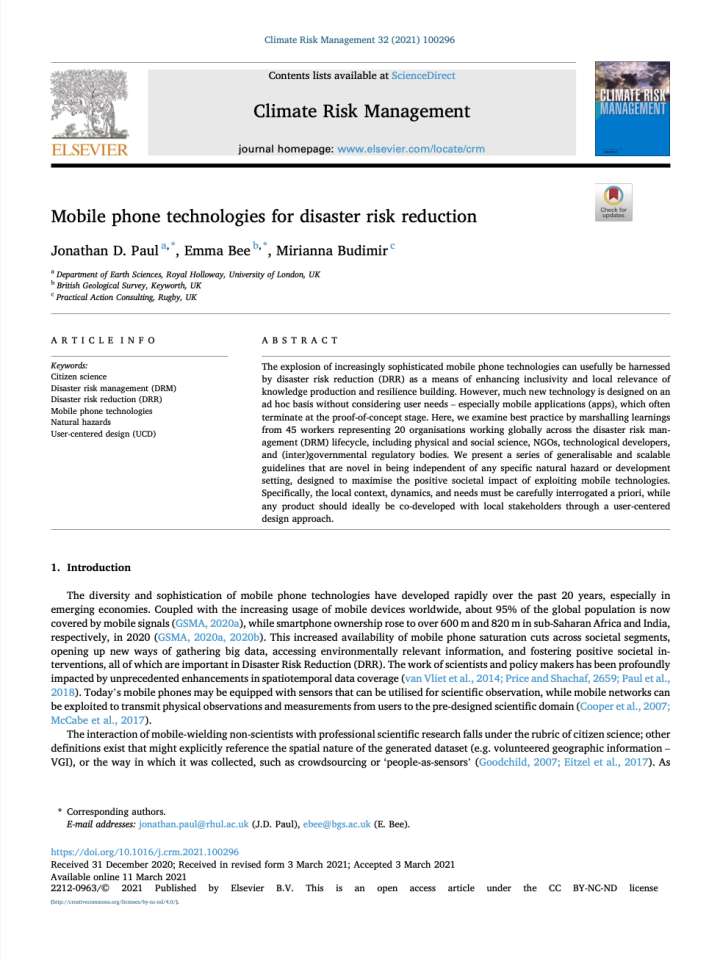Mobile phone technologies for disaster risk reduction
This paper examines best practice by marshalling learnings from 45 workers representing 20 organisations working globally across the disaster risk management (DRM) lifecycle, including physical and social science, NGOs, technological developers, and (inter)governmental regulatory bodies. The explosion of increasingly sophisticated mobile phone technologies can usefully be harnessed by disaster risk reduction (DRR) as a means of enhancing inclusivity and local relevance of knowledge production and resilience building. However, much new technology is designed on an ad hoc basis without considering user needs – especially mobile applications (apps), which often terminate at the proof-of-concept stage.
The research present a series of generalisable and scalable guidelines that are novel in being independent of any specific natural hazard or development setting, designed to maximise the positive societal impact of exploiting mobile technologies. Specifically, the local context, dynamics, and needs must be carefully interrogated a priori, while any product should ideally be co-developed with local stakeholders through a user-centered design approach.
Explore further
